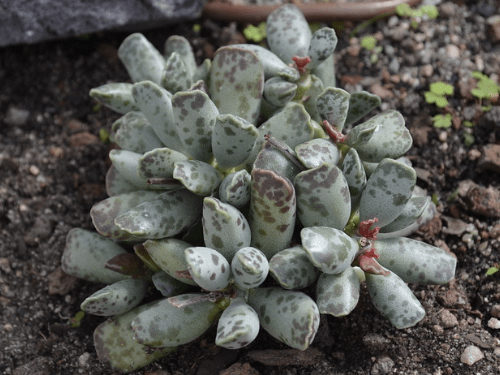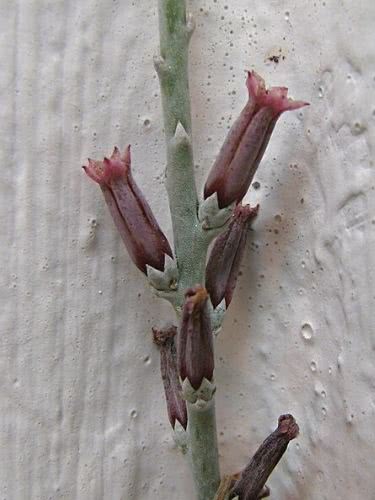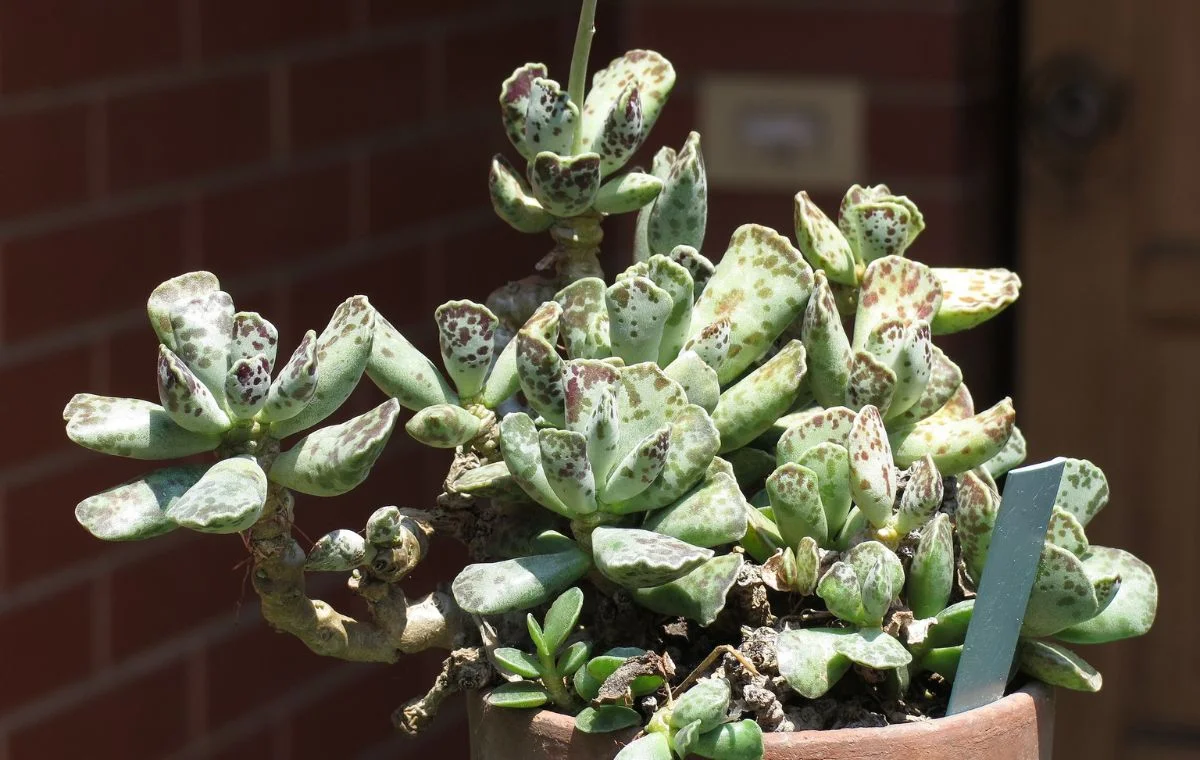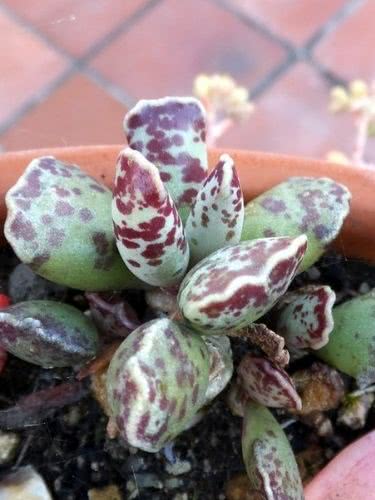The Plover Eggs Plant (Adromischus cooperi), also known as Club-adromischus, is a compact, perennial succulent species with a small stature. This plant has a curious appearance, resembling a stone from afar, but up close, it captivates with its foliage that displays purplish spots and a distinctive shape. It grows in dense clusters of rosettes, and its height rarely exceeds 15 cm (approximately 6 inches). The succulent leaves resemble the shape of a turtle’s foot, that is, they are triangular, with the wider end narrowing at the base, featuring wavy margins. They have a green-gray color with purple, red, or brown spots. At first glance, the leaves appear as if they’ve been filled with air.

As for the flowers of this species, they hold little ornamental value. They are small, tubular, and pink in color, growing on a vertical stem above the foliage during the spring. An interesting characteristic of this species is that over the years, it develops one (or more) thick stems, resembling a miniature tree, similar to what occurs in the desert rose (Adenium obesum) and the sedum bálsamo (Sedum dendroideum), for example.
Highly prized by collectors, the Plover Eggs Plant is a resilient species often cultivated in pots, containers, and garden beds. This succulent is an excellent choice for terrarium arrangements, rock gardens, and even planted alongside other succulent species. Its sculptural form and ornamental foliage add interest and contrast to other plants in the garden. Children are particularly drawn to this species due to its playful appearance. It is not demanding in terms of maintenance, requiring only occasional pruning for cleanliness.

It should be cultivated in partial shade or full sun, needing intense sunlight for the purple spots to be accentuated, thus enhancing the beauty of the succulent. Growing it in a location with insufficient light will lead to rapid etiolation of the plant, causing it to lose its dense aspect and develop small, pale leaves. It has slow growth and can survive drought, although this causes the leaves to wilt and become wrinkled, returning to their thick appearance when watered. Therefore, watering should be done when the soil is dry, with slightly more frequency in the summer and reduced in the winter. Avoid overwatering the substrate, as this can lead to rapid root rot.
It thrives in mild climates, with well-draining, sandy soil enriched with organic matter. It tolerates cold weather, enduring freezing temperatures (down to -2°C or 28°F). Substrates can be composed of one part sand and one part potting soil, or you can acquire ready-made succulent mixes. It’s beneficial to provide reduced potassium and phosphorus-rich fertilization during spring and autumn. Use fertilizers specifically formulated for cacti and succulents or apply ⅓ of the recommended garden fertilizer dose (NPK). Propagation of this succulent can be achieved through leaf and stem cuttings, seeds, or by dividing clusters. When separating segments (stems and leaves) for cuttings, allow them to callus for 24 hours before planting. Handle the Plover Eggs Plant with care, as its leaves detach easily.



